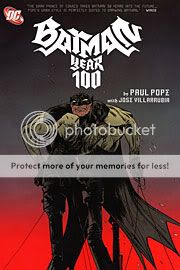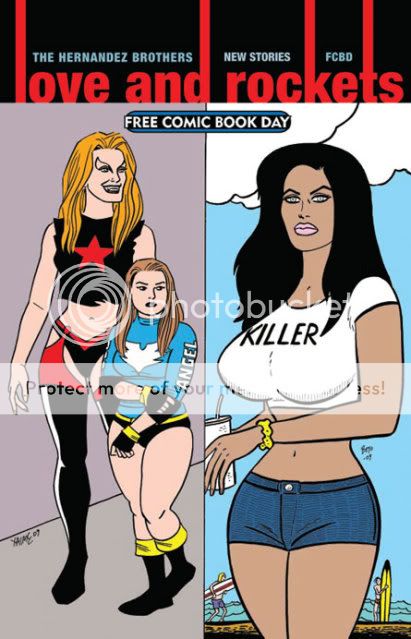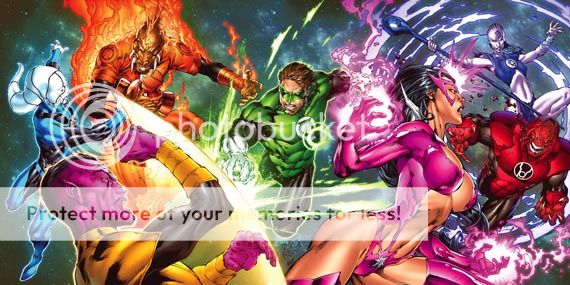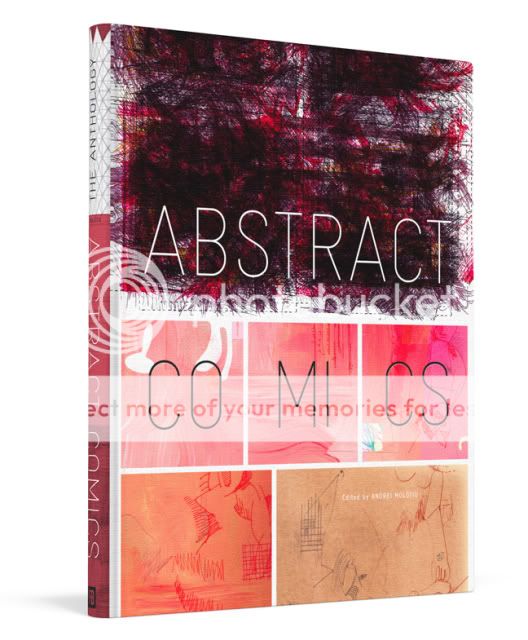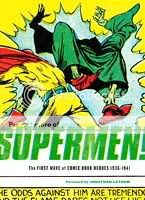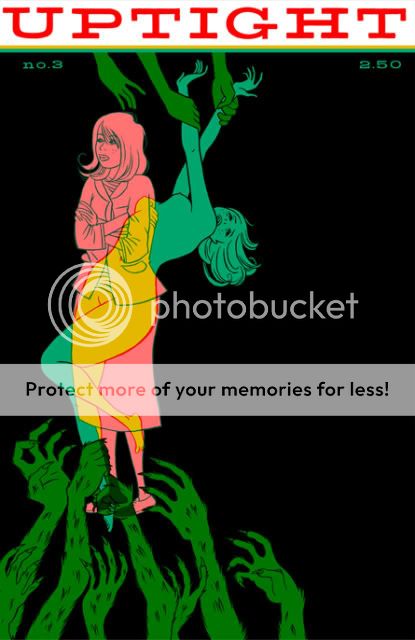Archive for April 6, 2009
Comics Time: Batman Year 100
April 6, 2009Batman Year 100
Paul Pope, writer/artist
DC Comics, 2007
230 pages
$19.99
Originally written on April 8, 2007 for publication in The Comics Journal
Over the past decade, the most innovative and entertaining examples of action cinema have gone in one of two directions. Some have used a stylized combination of wire work and digital tomfoolery to make it all look easy–wuxia movies, The Matrix (wuxia gone Western), 300 (wuxia‘s Western equivalent), Kill Bill Volume One. Others have gone for a lived-in, beat-down, de-glamorized vibe that makes it look damn hard–Casino Royale, the battle scenes in The Lord of the Rings, Kill Bill Volume Two.
Given Paul Pope’s futurist bent and Japanese influences, you might think his epic science-fiction alternate-future Bat-book would head in the former direction. Not so! From the thrilling opening sequence of Batman Year 100 onward, Pope makes it clear that he’s going to make his hero seem super by making everything he does seem as down-to-earth, and difficult, as possible. Frank Miller’s interior-monologue litanies of broken ribs and paralyzed nerve clusters notwithstanding, there’s never been a better depiction of the extremely physical nature of dressing up like a bat, running around city rooftops and picking fights with people. And in the hands of an action choreographer and stylist like Pope, that alone makes for a hell of a comic.
Pope’s obsession with the man half of the Batman–evident even in the antiquated, hyphenated way he frequently spells “the Bat-Man of Gotham”‘s moniker itself–was apparently a preeminent concern of the writer/artist’s from the get-go. The book’s copious extra features include an initial sketch sent to editor Bob Schreck, accompanied by a laundry list of handwritten questions pertaining not to where the character keeps his kryptonite ring or whether he and Catwoman are still an item, but his height, his build, what material his mask is made of, whether he can wear “square trunks like an Olympic swimmer” and which joints his costume might gather at. In notes written for the collection, Pope explains his fixation:
“My preference is to work on stories where I am free to completely design a fictional world–literally from the ground up. Take Batman’s boots for example. This guy would need a good, sturdy pair of boots…It’s long been a pet peeve of mine when you come across comic book artists who insist on drawing generic, featureless boot-like shapes beneath the ankles of their superheroes, as if boots were just vague, foot-shaped stumps molded out of colorful plastic blobs, resembling something you’d get out of a toy box at a dentist’s office…”
There’s a lot more where that came from–and that’s just the costume design. Perhaps that’s to be expected from Pope, who as an artist has frequently dallied in the world of fashion and is attuned to the dovetailing of form and function, style and substance with any well-dressed individual, superheroes included. But the “concealed human vulnerability” conveyed in his clunky clodhoppers and wrinkly elbows is concealed no longer the second Pope puts him through his action-adventure paces. The book opens with Batman being doggedly pursued by, well, dogs, across the familiar rooftop landscape of Gotham’s vigilante clique. This Batman doesn’t just toss a few Batarangs, launch a grappling hook and swing away to brood atop a gargoyle another day. When he jumps a 25-foot gap between roofs, trailing blood from a wound in his side, he actually has to pause to catch his breath and give his aching bones and muscles a chance to recuperate. (And to smirk at his frustrated canine pursuers, admittedly.) When he hides from a SWAT team in a child’s apartment, it’s with a sense of genuine peril should the kid rat him out–in his weakened state, he’d clearly get his ass handed to him. And when he finally turns the tables on the federal goons by attacking them in a stairwell, it’s clear he’s relying far more on the element of surprise and pure costumed bluster than on flawless martial artistry. This Batman could lose, and that’s what makes his adventures so much fun to follow.
The choice even makes thematic sense. The semi-dystopian setting of Year 100 is one of Pope’s now-trademark libertarian nightmare scenarios, a world where surveillance cameras are surgically grafted into the eyeballs of police dogs and the fact that Batman wears a mask and therefore can’t be identified presents a far more visceral threat to his governmental enemies than the fact that he’s suspected of murdering a federal agent. In the same way that Orwell’s free-thinking Winston is told by his torturers that he is the last human being, Pope’s Batman is memorable not because of any dazzling gadgets or superhuman displays of physical prowess, but because he eats, sleeps, keeps protein bars in his utility belt, wears a shirt that’s a size too small, talks with a speech impediment when he wears scary fake fangs to freak out federal goons, gets his ass thoroughly kicked every time he sees action, and requires a small support team consisting of a doctor, a tech expert and a motorcycle mechanic to help him get anything done at all. With each of the aforementioned acts he reasserts his irreducible humanity in a world classified and documented and categorized and bureaucratized to within an inch of its life. It’s all enhanced by Pope’s familiar stylistic tics–meaty and careworn faces, bee-stung lips, heavy brows, hair that hasn’t seen shampoo for a fortnight, clothes that bulge and bag and buckle, characters who clamber and carom down creaky stairs and through grimy alleys and around telephone wires. He’s not a number, he’s a free man. The physical is political.
And much to this fanboy’s delight, the Bat-portion of “Bat-Man” doesn’t go ignored. I wish I could remember the name of the online wit who pointed out the true ridiculousness of Batman’s outfit: Like an old Star Wars Halloween costume with the character’s picture plastered on the chest, the Bat-costume’s central motif is a freaking drawing of the animal it’s supposed to transform its wearer into. What kind of sissy-ass criminal would be scared of that? But to this Batman of the year 2039, the key to striking terror isn’t the animal itself, but the unfamiliarity it represents. Fighting against platoons of jackbooted federales with animalistic nicknames like the Wolves and the Panthers, Batman takes advantage of his sui generis state–none of these professional ass-kickers have ever seen anything like him–and uses it to scare the crap out of them. His mask is designed to distort his facial features into inhuman unrecognizability. He uses sonic enhancements to emit growls. He wears a set of porcelain vampire teeth. Put it all together and, as captured in a searingly intense panel depicting a motion-captured close-up from a surveillance camera, it’s the scariest Batman has ever looked and acted, even if his sleeves are too short. (Colorist Jose Villarubia nails that Blair Witch by way of One Night in Paris screen; he’s at his best with the neons and glows of the tech-y end of Pope’s world, rather than the Vertigo-style greens that sully the down-and-dirty stuff.)
If I’m lingering on business rather than story, that’s because the story itself doesn’t cohere nearly as well as the ideas and images behind its lead character. In a plot drawing heavily from post-9/11 fears of governmental intrusion and terrorist brutality–Pope being perhaps the only major comics artist (not counting Red-Meat Miller) to give the taboo against taking the latter as seriously as the former the middle finger it deserves–Batman, his little band of helpers, and Capt. Jim Gordon (presented here as a quid pro quo political appointee) uncover a small but serious conspiracy within the federal ranks to hijack a terrorist-developed doomsday virus for their own ends. Or something. To be honest, it’s kind of hard to follow, existing mainly as a platform upon which Pope’s characters declaim didactically about the wisdom of trusting the government, the depths of depravity to which terrorists have no problem sinking, the healing power of open-source information streams, and so on. It makes for a cute ending–one where Batman and crew avert the apocalypse not by kicking the Joker’s ass but by the counterintelligence equivalent of uploading a video to YouTube–and insofar as it relies on fulfilling relatable tasks (climbing up ropes, locating lost computer disks, remembering stuff), it’s refreshing. But in terms of presenting readers with a compelling and solvable mystery, one wishes Pope had taken as much time making it as solid and singular as Batman’s trunks. Toward the end, even the action starts to slip away, with a motorcycle chase that’s tough to parse and too death-defying by half. How about giving the Bat-cycle a flat tire?
But the book is redeemed by its final pages, where Pope makes the seemingly counterintuitive, extremely unorthodox choice to keep Batman’s secret identity a secret from both his enemies–and us. Is he, somehow, the same Bruce Wayne who cooked up the heroic identity way back in 1939? Is he a descendent who took up the mantle? Is he (most likely) just some guy who thinks privacy and decency need a human avatar in this crazy mixed-up world? He’s not telling, and neither is Pope, who leaves us with a final panel that brings us full circle by showing Batman frantically running away from pursuers who will never catch him. The specifics may get a little wonky, but that indelible wish to remain unfettered, unclassifiable and untouchable–even if you get the snot beat out of you from time to time for your troubles–is as good a reason as any to dress up in a costume, or read a book about a guy who does so.
Seanmix – I Need Sugar: The Best of Underworld
April 6, 2009Part I
Juanita/Kiteless/To Dream of Love / Banstyle/Sappys Curry / Two Months Off / Crocodile / Beautiful Burnout / Will and Amira [with Gabriel Yared] / Pearl’s Girl / Doot Doot [as Freur]
Part II
Jumbo / Mmm Skyscraper I Love You / Boy, Boy, Boy / Dirty Epic / Cowgirl / Small Conker and a Twix/You Do Scribble / Most ‘ospitable / Born Slippy.NUXX / Please Help Me
Underworld is my favorite band.
* After spending the ’80s in struggling new wave bands called Freur and Underworld (the group’s original, more traditional iteration), then taking time off to work with the art and design collective Tomato with whom they are still affiliated, musicians Karl Hyde and Rick Smith hooked up with a much younger DJ named Darren Emerson. Together they created some dance singles under the names Lemon Interrput and Steppin’ Razor, selling them out of the back of a van at gigs. By 1993 they were releasing singles as Underworld again, leading up to their re-debut, 1994’s Dubnobasswithmyheadman.
* Emerson eventually left the band, leaving Hyde and Smith to continue as a duo beginning with 2002’s A Hundred Days Off. After the completion of their most recent album, Oblivion with Bells, DJ and frequent Underworld remixer Darren Price joined the group for their live performances, which are heavily improvisatory. I guess they like Darrens.
* Hyde, the band’s singer, assembles his lyrics in large part from snippets of overheard conversations.
* Perhaps in part because of the prominence of the songs “Born Slippy.NUXX” and “Dark Train” in the film Trainspotting, “cinematic” is an adjective frequently used to describe Underworld’s fairly epic form of dance music.
* “Pink Floyd with beats” is a phrase I’ll use to describe them in a pinch.
* Underworld’s music is very, very good as an accompaniment for travel by train or car. I interviewed them once and they told me everyone tells them this. Maybe it’s because of the warmly propulsive beats, maybe it’s because Hyde’s lyrics themselves are often recorded during travel.
* Their music feels blue to me, whatever that means.
* They’re the best live act I’ve ever seen by a comfortable margin.
* “Born Slippy” is that “shouting lager, lager, lager” song.
I got to know Underworld during my first semester of college, thanks to the Trainspotting soundtrack and the “electronica” boomlet. I think they are my first post-adolescent band in that regard. I’ve listened to them more or less constantly since then. Normally this is where the whole “soundtrack of my life” tag would go, and not without good reason, but I think referring to Underworld’s music as “cinematic” gets it all wrong. While it is indeed dramatic, frequently anthemic, it doesn’t help craft your life into a story of some kind, a narrative with beginning, middle, and end, playing out on the screen of your mind–it emphasizes and heightens the emotional content of this moment, whether you’re dancing to it at a concert or listening to it while staring out the window of a train or playing it behind the closed door of your bedroom, with someone or without someone. Underworld is an utterly immediate band.
This two-part mix is pretty simply a collection of many of my favorite songs of theirs, with one or two additions or subtractions for cohesiveness’ sake. If you’d like more, two excellent, wide-ranging collections are already out there: Everything, Everything, a live album from the final tour of the Hyde/Smith/Emerson era, and Underworld 1992-2002, a two-disc greatest-hits-type compilation of all the singles from that decade. I’d also recommend their latest album, Oblivion with Bells–if you liked Animal Collective’s Merriweather Post Pavilion and thought “I want more of this,” that’s a record for you.
I hope you enjoy the mix!
Carnival of souls
April 3, 2009* New Love & Rockets Free Comic Book Day comic featuring the following cover and a story from Gilbert Hernandez called “Chest Fever,” the title of the Band’s best song? Shit yeah.
* Triptych cover for Blackest Night: Tales of the Corps #1-3? Oh, indeed. My God the rainbow of Lanterns is a wonderful idea. I do apologize on behalf of Ed Benes, however. Star Sapphire LOL
* Josh Cotter announcing the completion of Driven by Lemons and March Hare? Good golly. Here’s the cover for Lemons.
It also looks like I’ll be interviewing Josh for The Comics Journal, so look out for that.
* A new Abstract Comics blog in preparation for the Andrei Molotiu-edited anthology coming soon from Fantagraphics? This one literally made me pump my fists in the air with glee. This is like pure pleasure for me.
* Torture part one: Here’s an update on the ACLU’s efforts to get the Obama Justice Department to release the Bush Justice Department’s memos giving torture the green light.
* Torture part two: Here’s a video of and an article about a woman being flogged in public by the Pakistani Taliban for the crime of coming out of a guy’s house.
“Please stop it,” she begs, alternately whimpering or screaming in pain with each blow to the backside. “Either kill me or stop it now.”
A crowd of men stands by, watching silently. Off camera a voice issues instructions. “Hold her legs tightly,” he says as she squirms and yelps.
[…]
The woman’s brother is among the men pinning her down…
(Both links via Andrew Sullivan.)
* Boy, recent events sure have exposed the lurid eschatological delusions of significant segments of the political and opinion establishment, huh? And only two months into the new administration! It’s not a good look. I’ve seen enough comparisons to the Joker and references to the mustachioed dictator hall of fame that I’m left wondering where they’ll go when he tries to pass climate change legislation or institute universal healthcare. Darkseid and Elizabeth Bathory? I’ve learned from bitter, bitter experience that politics are not the place to apply the lessons you think you’ve been taught by heroic fantasy, or by the aspects of history that most closely resemble heroic fantasy.
Marijuana is neither evil nor dangerous. Scientists have proven its medical uses. It has spared millions from anguish. But the casual pleasure marijuana has delivered is orders of magnitude greater than the pain it has assuaged, and pleasure matters too. That’s probably why Barack Obama smoked up the second and third times: because he liked it. That’s why tens of millions of Americans regularly take a puff, despite the misconceived laws meant to save us from our own wickedness.
* Ezra Klein:
As a policy wonk, I think marijuana should be legal, but should be regulated, heavily taxed, and subjected to various restrictions on advertising, age, etc. That said, I think it’s important to say that it shouldn’t just be legal for reasons of profit but for reasons of pleasure. It’s a public good for people to derive enjoyment and relaxation from a harmless and private pursuit.
* Jim Henley:
In my case, Will stands in for the numerous friends we all have who either were or are recreational drug users – mostly marijuana smokers but also dabblers in other drugs – who, today, lead perfectly “productive” lives, as conventional society measures productive. It’s a great evil to waste untold billions of dollars and ruin millions of lives, and end numberless thousands of others around the globe, in the name of a futile war based on lies.
I’ve learned that last part from bitter, bitter experience too.
The Soft Machine – We Did It Again
April 3, 2009This song is over 40 years old.
Comics Time: Supermen! The First Wave of Comic Book Heroes 1936-1941
April 3, 2009Supermen! The First Wave of Comic Book Heroes 1936-1941
Greg Sadowski, editor
Jerry Siegel, Joe Shuster, George E. Brenner, Ken Fitch, Fred Guardineer, Bill Everett, Will Eisner, Lou Fine, Dick Briefer, Jack Kirby, Fletcher Hanks, Irv Novick, Jack Cole, Al Bryant, Ogden Whitney, Gardner Fox, Mart Bailey, Basil Wolverton, Joe Simon, writers/artists
192 pages
$24.99
Looked at strictly as an archival project, this Greg Sadowski-edited and designed anthology of early superhero comics is, like Paul Karasik’s Fletcher Hanks collection and DC’s Jack Kirby omnibuses before it, a real “here’s how it’s done” moment. Entertaining, left-field subject matter; eye-pleasing design; tactile paper stock; color technique and reproduction values that neither hide the material behind the haze of nostalgia nor try to mask its primitive origins with out-of-place high-gloss modernity; manageable length and heft; art presented at a powerful but not brobdingnagian size. The ongoing efforts of the aforementioned editors and publishers, along with the likes of Dan Nadel and Craig Yoe, truly have us living in the Golden Age of Reprints.
But how does the thing read? Well, generally speaking. I have to admit I don’t feel that the book is quite the revelation that, say, Jog argues it to be. Taken as a whole the early superhero comics reproduced here lack both the transcendent artistry and metaphorical/philosophical vision of Kirby’s Fourth World Omnibus and the eerie, obsessive-compulsive, barely checked madness of Hanks’s I Shall Destroy All the Civilized Planets! Meanwhile, though the wordy foreword by Jonathan Lethem makes much of how these protean efforts present an array of paths not taken by the more codified superhero stories that followed, those of us who’ve put a lot of time into reading modern superhero comics and nearly as much into arguing on their behalf are used to hunting down fruitfully unusual avenues of expression in that genre from past and present alike. Moreover, for all their occasional flashes of genuine sophistication or bracing weirdness, most of these stories are overwhelmed by their rudimentary plots, wooden dialogue, omnipresent narration, and the sense that for all their high-pitched violence, the actual emotional and physical stakes for the one-dimensional “characters” involved are vanishingly small. Read a couple at a time, the stories are entertainingly zesty; stretched one after the other, you’re gonna need to put the book down.
But even if the book isn’t the “reverse-neutron bomb” Lethem makes it out to be, who said it needed to be one? There’s enough pleasure to be had in recognizing the plug-ugly goons, heavy-lidded dames, and even the earliest traces of Kirbytech in the former Jacob Kurtzberg’s contributions; or seeing just how much sharper was Jack Cole than his contemporaries in terms of comedy and layout. I’ll take any excuse to look at comics by Fletcher Hanks, with his neurotically repeated figures and forms; placing them in close proximity with, say, Al Bryant’s “Fero the Planet Detective” sharpens our appreciation for the latter’s comically capricious violence and memorably hideous villains. Soon to be a star outside the genre, Basil Wolverton crafts a sci-fi adventure with character and costume designs that alternately prefigure the undergrounds and Chris Ware and a comparatively complex story that evokes the macho codes of honor and friendship often found in its pulp-prose forebears. Will Einser and Lou Fine turn in a tremendous, print-it-as-a-poster-and-hang-it-up cover for “Samson,” and give us one of the great simple pleasures in superhero comics–a bold, attractively streamlined costume–in the red-and-yellow person of the Flame.
As you might expect, any number of panels and word balloons are internet-meme-worthy–just flipping through at random I came across one of my favorite, a scene from a Bill Everett “Sub-Zero” comic in which the villain takes the time to fix up some foamy shaving cream, the better to fit the captured hero’s head for the electric chair’s skullcap. But there are moments of weird beauty, too: Eisner and Fine’s Flame standing like a Greek god as he speaks with a beautiful woman; Wolverton’s armored spacemen colliding in battle; Fred Guardineer bringing a statue of George Washington to uncanny life; Kirby’s proto-Roger Dean Martian landscape. And while the variety of approaches on display here may not necessarily blow minds, they should at least open some eyes. In a time when the major superhero companies seem dead-set on creating the most uniform tone possible across their lines–black-ops badasses in spandex at Marvel, a hyperviolent pantheon at DC–evidence that superheroes can behave in any number of ways against any number of threats is indeed liberating, perhaps even necessary. Forget the turgid prose–focus on the weird beauty. That’s what I did.
Carnival of souls
April 2, 2009* Heading to the printers this month: Jordan Crane’s Uptight #3! YESSSSSSSSS
* Here’s quite an array of artcomix badassery: Frank Santoro, Lauren Weinstein, Dan Nadel, CF, Yuichi Yokoyama. (Via Comics Comics.)
* A leaked email from Magnolia Pictures reveals the studio’s sentiment regarding the blog-generated kerfuffle over the subtitles for Let the Right One In: STFU. Look, it’s entirely possible that this is much ado about nothing, all the from the side-by-sides I’ve seen the theatrical subtitles seem demonstrably superior. (The email claims the DVD subs are more literal translations; who knows?) But the blogs this email bashes are the same blogs that told all and sundry that Let the Right One In was the best horror movie of the year, if not the best movie period. (Via Jason Adams.)
* Speaking of Jason, he agreed with me about last night’s Lost episode in two particulars: It’s nice for Kate to have a raison d’etre beyond her feelings about someone else, and Kate looks hot in supermarkets. He adds an observation about Jack’s waxed chest, though, which difference is what makes him him and me me.
* And speaking of last night’s Lost, Todd Van Der Werff sums up how I felt about it:
All of this is a lot of rambling preamble to say that “Whatever Happened, Happened,” written by series masterminds Damon Lindelof and Carleton Cuse and directed by Bobby Roth, was another solid hour in what’s shaping up to be a very well-done middle run of episodes for this show’s fifth season. It’s rare to have a show have a creative renaissance this late in its life, but Lost, most likely reinvigorated by knowing where it’s ending and roughly where it’s going, is crackling along like it never has before. Here’s a measure of just how much fun I had with “Whatever Happened, Happened”: Basically nothing HAPPENED in the episode, but I still was completely engaged throughout. And, after all of my complaining about how boring and useless such episodes were earlier this season, this was a KATE (Evangeline Lilly) episode that not only managed to tell a compelling story but also utilized flashbacks to Kate’s off-Island life about as well as they can be used. I haven’t looked into it all that thoroughly, but I daresay this was the best Kate episode of them all. Granted, it’s kind of a low bar, but the show took an awfully big step over that bar.
Stuck in the King Crimson k-hole
April 2, 2009Okay, this is actually getting a little weird by now: I’ve been listening to King Crimson more or less nonstop since I put that mix together a couple of weekends ago. This is putting me in a bizarre, intense headspace. So many of Crimso’s songs rely on mechanistic repetition and build that listening to them almost demands repetition itself–I can’t count how many times I’ve listened to “Larks’ Tongues in Aspic Part II” over the past couple of days, for example–and the overall effect is similar to standing with your face a few inches away from some horrible giant industrial machine that could fly apart at any moment.
I’ve been tapping into YouTube to dig up what live versions I can find, and unfortunately a pretty tremendous Fripp/Belew/Levin/Bruford-era version of “Larks’…Part II” I’d planned on posting got disappeared due to copyright infringement in the time it took me to get home from work last night. However, this gives me an excuse to post this cover version by students from Utah’s Paul Green School of Rock. While the Belew-centric version by KC themselves pushed the song into the crystalline post-punk sound of the band in that time, these kids just go metal on its ass, bringing out the proto-Alice in Chains skronk from the original. What it must be like to be a proud parent in the audience!
Lost thoughts
April 1, 2009SPOILER ALERT
* I really enjoyed this episode. It threaded a ton of needles with a slew of loose ends, all rather effortlessly I thought. On the Kate side, you found out what Sawyer whispered and got some movement regarding his ex and his daughter. You found out how and why Kate gave up Aaron. You got some resolution for Claire’s poor grandma/Christian’s poor babymama. And best of all you found out why Kate returned: to find Claire!
* This last part really made me happy because I just tend to like it when shows find a way to make a big deal out of smaller characters. Now one of our core players is on a quest to track down Ms. Stay Away From Me and the Bay-bee Chah-lie. Hopefully this will keep Kate busy enough not to fuck up Sawyer and Juliet and not get dragged into another thing with Jack. It also suggests that Claire’s status is going to become more central to the plot, which I appreciate. I do wonder whether this mean’s Aaron’s all that special after all, whether he’ll be back on the Island at some point or whether he’s just going to stay with Grandma, but hey.
* Meanwhile, on the Dharma/Others/Island end of things, you obviously see how and why Ben survives Sayid’s assassination attempt. You get another callback to the Temple and whatever the hell goes on in there, presumably some supernatural brainwashing process like what Rousseau believed the monster did to her crew. You find out that not only did Ben not remember Sayid, but you also find out why that’s the case–I assumed that he did remember but just hid it.
* And finally, of course, you get the big payoff moment between Ben and Locke. The look of panic on Ben’s face was almost as priceless as the look of confidence on Locke’s. Payback’s a bitch, I hope!
* When you think of the sheer number of balls this episode kept in the air, the sheer number of other episodes it referred back to, it’s really flabbergasting. Sawyer’s whisper, Sawyer’s conned ex-girlfriend, the surgery storyline from the part of Season Three that everyone but me hated, Ben’s first meeting with Richard, his mother’s death in childbirth, the oft-seen scene where Ben tells them they all need to go back, the Christian/Claire/Aaron lineage, the red herring with Mrs. Littleton and Ben’s lawyer, presumably Juliet’s history with Ben and that “you look just like her” line from the woman whose husband Juliet was schtupping, all the time-travel meta-discussion between Hurley and Miles, some mentions of Ellie and Charles running the show for the Others, Claire giving birth to Aaron, Claire disappearing, the big lie about 815, the fame of the Oceanic Six–if they’d somehow worked in Boone and Shannon, or Eko and Yemi, or the Adam & Eve skeletons and their black and white stones, I wouldn’t have been surprised.
* Heck, they even gave us a visual reference to that episode where Kate was married to the Joss Whedon guy by putting her back in a supermarket. Between those two episodes, I don’t know what it is about the lighting in grocery stores, but hubba hubba, Kate should go shopping more often.
* They’re also answering questions a lot faster than they used to, now that they know that they can. So we find out what happened to Kate and Aaron just a handful of episodes after that first became an issue, just like we learned how Sayid got arrested by big-haired lady, just like I presume we’ll find out how Hurley ended up on the plane before the season’s out too. But where I felt this the most was when they showed Richard walking into the Temple with Ben, where a couple of seasons ago he’d have just walked off and we’d be left wondering where he took him and what he did with him. I’ve always enjoyed the show no matter how long they left various mysteries out there, but this new economy of storytelling is pretty satisfying.
* Given the amount of superhero comics I read, this business about whether or not it’s right to kill Young Ben/let Young Ben die is the kind of thing I’ve thought about and talked about more than is perhaps healthy. Yet the show doesn’t dwell on it all that much–we’re clearly supposed to feel Jack is a dick for washing his hands of the affair, and we’re clearly supposed to think Sawyer, Juliet, and Kate are doing the right thing by trying to save his life, even if that means he’s going to make their lives a living hell 30 years later and murder dozens of people some time before that. The thing that’s tricky about this sort of story is that while the normal, real-world concept of preemptive strikes involves a degree of uncertainty, time-travelers or clairvoyants or whatever actually know what will happen if they don’t make their move. Sure, it’s cold-blooded to shoot a 12-year-old or leave him to die on an operating table, but it’s also cold-blooded to condemn a bunch of hippie scientists in jumpsuits to an agonizing death by chemical weapons–not to mention Ana-Lucia, Libby, the redshirts, everyone on the freighter, etc. When I hear commercials for that Wanted movie say “Kill one, save one thousand” I want to kill myself, but here it’s a more ethically dicey situation.
* Do you think we’ll ever see that stewardess who joined the Others again? Or the kids? That was kind of a big deal, wasn’t it? That image of the Others dragging the teddy bear along?
* I liked it when they cut to commercial on the tableau of everyone in the house after Jack refused to help Young Ben the same way I liked it when they cut to commercial on Sawyer’s smiling face after Juliet helped Amy give birth to Aaron: It was something different in terms of what they cut to commercial on. Usually you get a close-up on someone who just said or did (usually said) something shocking, or a close-up on the shocked face of someone who just heard or saw (usually heard) the other person say or do (usually say) something shocking. In the case of the Sawyer Smiles cut, he was reacting to good news, which almost no one ever gets on this show. In the case of this tableau, it was a group reacting, in long shot, to the shocking statement. It just makes me happy when you get a little difference like that–it shows that the people who make the show are still alert and kicking.
Gossip Girl thoughts
April 1, 2009SPOILER WARNING
* First things first: April 20th? Way to schedule, CW!
* I think the Missus put it best when it comes to Vanessa-Chuck: “This is what Vanessa needed. Finally, she’s interesting! All it took was the magic of Chuck.”
* I think I can get behind the Nate-Blair rematch, too. Better than Nate-Vanessa, that’s for sure, and you’ve got to have a good reason to put off Chuck-Blair.
* I only just realized that Poppy Lipton wasn’t some real-life NYC socialite making a cameo like Jay McInerney or something. Instead she was just another underbaked Gossip Girl bit part. I don’t know why they keep introducing characters just to not use them or develop them.
* Serena’s getting a bit annoying. This party story was kind of lackluster and lame for her. However, I did enjoy her getting her comeuppance via Jenny’s kegger pals. I can’t imagine her getting married in Spain is going to improve things.
* “We’re not in need?” “It’s all relative.” Indeed, Humphreys. Indeed.
* Dan getting a fan letter from his believed-dead half-brother is a bit of a coinkydink even for a show where people routinely bump into their friends while walking around Manhattan.
* I liked the introduction of another Polish servant. That’s definitely what Gossip Girl was missing.
* How about an Eric-Jonathan make-out session? Or any kind of physical intimacy whatsoever?
* I feel like I’m complaining a lot but I actually enjoyed this episode. I think it’s just that I’m writing this in the middle of America’s Next Top Model, which is so bad it has me grumpy about everything.
Carnival of souls
April 1, 2009* Is any holiday more tedious than April Fools Day?
* This Onion story about President Obama’s post-Battlestar Galactica depression isn’t as funny as it could have been because a) most BSG fans have Lost to fall back on, and b) love it or hate it, “depression” isn’t an emotion engendered by the BSG finale.
* My pal Alex Segura is now DC Comics’ official blogger.
* My pal Rickey Purdin is showing off his Shelf Porn. It’s even more impressive in person–everywhere you turn in that apartment, there’s a bookshelf crammed to the gills.
* My pal Kiel Phegley reviews Evan Dorkin & Sarah Dyer’s Biff Bam Pow! #1. In so doing he explains the process by which indie/alt comics got covered at Wizard, bemoans the dearth of genuine action scenes in modern comics (as opposed to just splash-page fight scenes), acknowledges the sad reality of all-ages comics, recalls how his Wizard interview with Dorkin became one of the ones that got away, and touches on various other topics of interest.
* My pal Tom Spurgeon’s list of noteworthy webcomics seems like a very useful feature to me.
* My pal Curt Purcell reviews Cameron Stewart’s mystery webcomic Sin Titulo. I’m really enjoying Curt’s emergence as what we Comics Blogosphere OGs used to call a semi-comics blogger.
Comics Time: Dragon Head Vols. 1-5
April 1, 2009Dragon Head Vols. 1-5
Minetaro Mochizuki, writer/artist
Tokyopop, 2005-2007
232-248 pages each
$9.99 each
Originally written on February 21, 2007 for publication in The Comics Journal
First, an admission: If it’s the post-apocalypse, I’ll eat it.
Second, an assertion: Even discounting my bias, Dragon Head is one of the most compulsively readable manga to reach an appreciable non-otaku audience (or at least this member thereof) in quite some time.
I found this somewhat surprising given DH‘s shaky start. Its first two volumes focus on an overbaked, if gut-level-gripping, high concept: Three high-school students are the sole survivors of a catastrophic train wreck in a collapsed tunnel deep underground. At this early stage the characters come out of Battle Royale central casting: Older boy Teru tries to do the right thing despite his mounting panic, younger nerd Nobuo bugs out and start doing things with knives and dead bodies, damsel in distress Ako is disarmingly wounded and pretty and ultimately more sensible than her two male companions combined, that sort of thing. Nobuo in particular is played to the cheap seats, going from zero to Lord of the Flies in the space of the first volume. Smart, detail-driven moment, like Ako awakening from a two-day coma to discover she’d gotten her period while she was unconscious and nearly going to pieces because her tampons were lost in the rubble, are few and far between.
By contrast, Mochizuki’s cartooning is vivid, memorable, even sensual, and seems to be where he’s deriving most of his pleasure here. However weak the psychological underpinnings of Nobuo’s freakout may be, Mochizuki renders its end result, the demonic face and body markings the kid gives himself using dead girls’ makeup, with graphic glee. Nearly wordless sequences throughout the second volume in which he chases Ako and later strips and paints her unconscious body utilize predatory pacing and intelligent image choices (a sharply turned head, a hand on a breast) to portray adolescent pre-sexuality gone vicious and sour. Mochizuki also evokes the impenetrable with evident relish, be it the walls of stone that hem the survivors in, the darkness that the kids are always trying to stave off with flashlights, lighters, and torched bottles of booze, or the mass of upturned seats, broken glass, torn-up backpacks and mangled limbs that fills the wreckage of the train.
Indeed, Mochizuki’s zeal for colossal depictions of the man-versus-nature conflict (a surprisingly rare sight in comics, for some reason) gives rise to a fairly major problem with Tokyopop’s translation work: In a world where so much action is the result of massive, indistinguishable walls of steam, stone, water, flame, earth, mud, and/or ash threatening to consume our protagonists, would it really be too much to ask for the publisher to translate the damn sound effects? They don’t even have to replace the Japanese characters–just run an English translation in smaller print alongside them and you’d be good to go. As it stands, without a telltale “RRRRUMBLE” or “HISSSSSSSSSSS” or “FWOOOOOSH,” the book’s many otherwise-silent sequences of natural disaster are extremely difficult to parse. Is that an ominous groan or an imminent collapse we’re hearing? Are Ako and Teru being overwhelmed by water or smoke or heat or their own overactive imaginations? All too frequently, if you don’t understand the kanji, your guess is as good as mine.
But all is forgiven once the inevitable showdown between sanity and face-painting, darkness-worshipping lunacy is over and the surviving kids finally make it to the surface world. We’re not entirely safe from wonky mental breakdowns yet; both Ako and Teru will, at varying points throughout the remaining volumes, weave in and out of catatonia or psychosis without much rhyme or reason. But as soon as they discover that whatever happened to their train tunnel happened to pretty much the entire rest of the world, the backdrop of their story expands exponentially, and their characters feel similarly enlarged. Their existential horror upon realizing that the atmosphere is full of enough soot to choke out the midday sun, their subsequent dazed, fumbling search for food, water, and news of the world, and Mochizuki’s you-can-taste-the-ash-in-your-mouth art for the sequence, are just the first signs that the book’s comparatively shallow action-thriller days are behind it. Had the book continued in that vein you might have expected the pair to become a cutesy, thrown-together-by-circumstance couple; instead their bond seems deeper and truer, driven by an instinctual need to survive and see that the other survives as well.
Sure enough, the greatest obstacle to their mutual survival turns out to be other people. Once again this could have been a minefield of cliche, but Teru and Ako’s dreamily horrifying journey among the human detritus of their dead world is where the book really takes off. A group of similar kids appears friendly, if slightly off, only for our heroes to discover that they blithely worship the “demon” they blame for the apocalypse they’ve experienced in a hard-to-shake ceremony involving gas masks and fireworks. A middle-aged woman in a motorcycle helmet takes them in, carving out a quiet, stately interlude for characters and reader alike in a refreshingly un-motherly way. Even the inevitable soldiers gone feral largely steer clear of the same old poses–granted, that’s how they start out, but soon a pair of them are joined with Ako and Teru more or less as equals, behaving and interacting as unpredictably as one suspects people in the real world would.
Through it all, the spectre of Nobuo hangs over Teru in particular, sometimes all but subliminally (one tremendous four-panel sequence shows Teru lying unconscious in the distance of identical shots of a rubble-filled scene, changing only in the fourth panel when Nobuo appears out of nowhere, mockingly squatting beside the body of his rival). He’s far more convincing and frightening an enemy when he’s treated as a source of guilt (why couldn’t Teru get his act together and save the poor kid, he wonders) than as a source of law-of-the-jungle fear. Mochizuki’s attention to detail regarding the headgear of the characters whom Teru and Ako stumble across later (they always seem to be sporting earphones or gas masks or baseball caps or motorcycle helmets or something) echoes Nobuo’s self-transformed skull and hints at whatever the title may really mean (by the end of Vol. 5, the only explicit reference is in the mutterings of an apparent lobotomy victim).
The overall effect is a nightmarish picaresque, like a cross between Children of Men and Apocalypse Now. With each volume better than the one before it, the perambulating structure pays off in spades. Get through the tunnel and you’ll want to see where the journey ends up.

